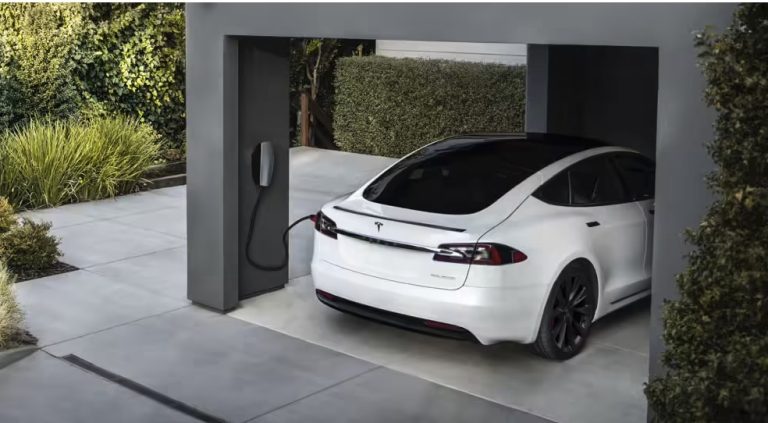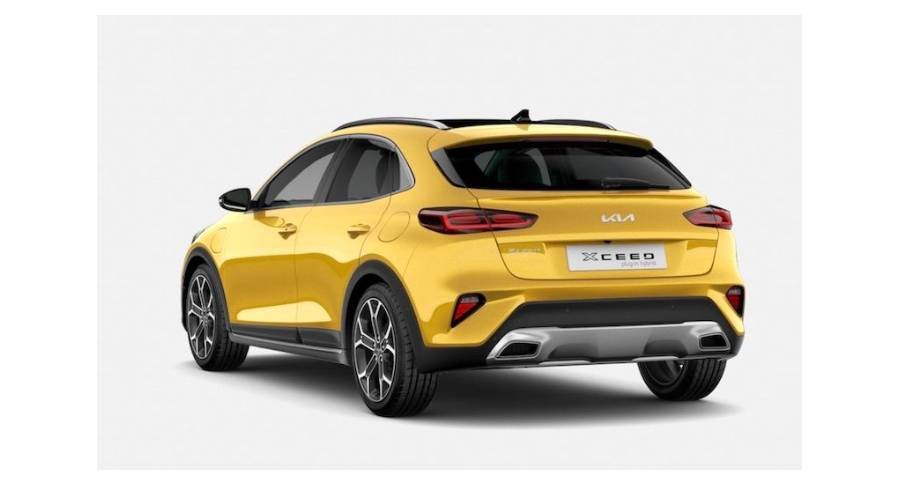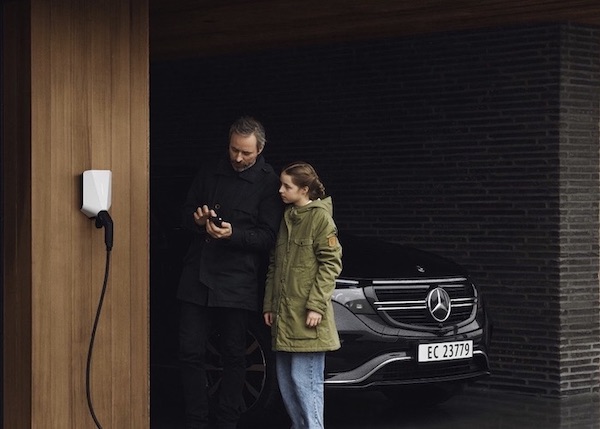Electric Cars: The Basics
For those of you new to zero-emission electric driving, we recommend a read of the following articles:
Sign up to the e-zoomed Electric Living newsletter
The Kia XCeed PHEV SUV
Kia Corporation, the South Korean automotive manufacturer is fast developing a portfolio of lower-emission ‘eco’ vehicles, to include, zero-tailpipe emission battery-electric vehicles (BEVs), plug-in hybrid electric vehicles (PHEVs) and mild hybrids. The Korean automotive company is headquartered in Seoul, and it is South Korea’s second largest automotive manufacturer after the Hyundai Motor Company (Hyundai owns a 33.88% stake in Kia Corporation). At one point, the US automotive manufacturer, Ford Motor Company, also owned a stake in Kia.
Kia Corporation has been active in the European markets since 1991. The Kia electric vehicle (EV) portfolio includes both, battery-electric vehicle (BEV) and plug-in hybrid electric vehicle (PHEV) models:
- All-electric Kia Niro
- All-electric Kia EV6
- All-electric Kia EV6 GT
- All-electric Kia EV9
- All-electric Kia EV3
- All-electric Kia Soul EV
- Kia Niro Plug-In Hybrid
- Kia XCeed Plug-In Hybrid
- Kia Ceed Sportswagon Plug-In Hybrid
- Kia Sorento Plug-In Hybrid
- Kia Sportage Plug-In Hybrid
The Kia XCeed compact crossover SUV has been manufactured since 2006. The XCeed was designed specifically for the European market. The model is currently in its third-generation. The hybrid variant concept was unveiled at the 2008 Paris Auto Show. The Kia XCeed is available as a plug-in hybrid electric vehicle (PHEV).
It is compact, stylish and is environmentally-friendly. The Kia XCeed electric vehicle (EV) is a relatively affordable PHEV for families, and as a company car. The Kia PHEV pairs a 1.6-litre GDi petrol engine (6-speed DCT transmission) with an electric motor (44.5 kW), powered by an onboard EV battery. The automotive manufacturer claims a fuel economy up to 1.7 l/100 km for the electric vehicle (EV).
Of course the real-world fuel economy will depend on a number of factors, but none as influential as using the e-mode. Bottom-line, to increase the fuel economy of the electric vehicle and lower the driving costs, the PHEV should be driven as much as possible on the pure electric mode. It is also far cheaper to drive on electric mode, compared to using the combustion engine. Depending on when and where an electric car is charged, the cost per km for electric driving is between 5 and 10 cents.
Given the WLTP certified emission-free electric range is 42 km, and most commutes are short, there is much scope for taking advantage of electric driving to save money. The PHEV has a 8.9 kWh onboard EV battery, which is reasonably standard for a PHEV of this size.
However, expect the real-world electric range to be closer to 37 km. The EV range is impacted by a number of factors, to include: driving profile, speed, load, regenerative braking, road condition, weather and a lot more.
Taking advantage of the EV range will also require inculcating a habit of charging the EV on a regular basis, which again is as easy as charging a smartphone. We at e-zoomed recommend the use of a dedicated EV charging station, like easee to charge the EV.
We do not encourage the use of a domestic 3-PIN plug. Charging the EV using a single-phase EV charger will take up to 2 hours 15 minutes (0% → 100%). Of course, if you top up on a regular basis, the charging time will be faster. The EV incorporates a 3.3 kW AC onboard charger and is not capable of DC charging.
In terms of practicality, the EV has its limitation, given both the body style and the placement of the onboard EV battery. For adults, the rear seats are not as comfortable and the headroom is impacted by the roofline. Moreover, the boot size is small (291 L). If the rear seats are folded, the available cargo volume increases up to 1,243 L. However, the plug-in electric car is easy to drive and park, perfect for city and town centres.
The performance of the electric SUV will not exhilarate, but it does the job! The front-wheel drive XCeed Plug-In Hybrid can achieve 0-100 km/h in 11 seconds, also benefiting from instant torque. The hybrid drivetrain delivers a maximum power of 139 bhp (torque 265 Nm), sufficient for city and motorway driving. The top speed is 188 km/h. Do keep in mind that the additional weight of the onboard EV battery (117 kg) does impact the overall performance of the electric vehicle.
The Kia electric car has a decent level of standard specifications and safety features, to include: 10.25″ touchscreen satellite navigation, Android Auto, Apple CarPlay, reversing camera system, driver attention warning, hill-start assist control, intelligent stop & go, lane keep assist, blind-spot collision warning, forward collision-avoidance assist and more. Interior quality is decent and reflects the price tag of the EV.
Bottom-line, electric driving is good for the environment and the wallet!
| PROS | CONS |
|---|---|
| Affordable prices | Driving performance will not set the heart racing |
| Cheap to run on electric mode | Rear seats not as spacious as alternatives |
| Good standard specifications | On board charger limited to 3.3 kW. DC charging not available |
The Kia XCeed PHEV SUV (credit: KIA)
| At A Glance | |
|---|---|
| EV Type: | Plug-In Hybrid Electric Vehicle (PHEV) |
| Vehicle Type: | SUV (compact) |
| Engine: | Petrol-Electric |
| Available In Ireland: | Yes |
| Variants (1 Option) |
|---|
| Kia XCeed (price not available) |
| EV Battery & Emissions | |
|---|---|
| EV Battery Type: | Lithium-ion |
| EV Battery Capacity: | Available in one battery size: 8.9 kWh |
| Charging: | DC charging not available. Onboard charger: 3.3 kW AC (0% – 100%: 2 hrs 15 mins) |
| Charge Port: | Type 2 |
| EV Cable Type: | Type 2 |
| Tailpipe Emissions: | 38g (CO2/km) |
| Warranty: | 7 years or 160,000 km |
| Average Cost Of Residential Charging | |
|---|---|
| Battery net capacity : 8.8 kWh | € 2.10 |
| Battery net capacity : 11.6 kWh | € 2.78 |
| Battery net capacity : 12.0 kWh | € 2.87 |
| Battery net capacity : 13.10 kWh | € 3.14 |
| Battery net capacity : 14.10 kWh | € 3.37 |
- Note 1: The average cost of residential electricity in Ireland varies depending on the region, supplier and type of energy used. An average for Ireland is 23.97 cents/kWh.
- Note 2: Not all EV manufactures make available the data on net EV battery capacity, and in a number of instances the EV battery capacity advertised, does not state if it is gross or net capacity. In general, usable EV battery capacity is between 85% to 95% of the gross available capacity.
| Charging Times (Overview) | |
|---|---|
| Slow charging AC (3 kW – 3.6 kW): | 6 – 12 hours (dependent on size of EV battery & SOC) |
| Fast charging AC (7 kW – 22 kW): | 3 – 8 hours (dependent on size of EV battery & SoC) |
| Rapid charging AC (43 kW): | 0-80%: 20 mins to 60 mins (dependent on size of EV battery & SoC) |
- Note 1: SoC: state of charge
| Dimensions | |
|---|---|
| Height (mm): | 1495 |
| Width (mm): | 1826 |
| Length (mm): | 4395 |
| Wheelbase (mm): | 2650 |
| Turning Circle (m): | 10.6 |
| Boot Space (L): | 291 |
| 1.6 GDi PHEV | |
|---|---|
| EV Battery Capacity: | 8.9 kWh |
| Pure Electric Range (WLTP): | 42 km |
| Electric Energy Consumption (Wh/km): | 132 |
| Fuel Consumption (l/100 km): | 1.7 |
| Charging: | DC charging not available. Onboard charger: 3.3 kW AC (0% – 100%: 2 hrs 15 mins) |
| Top Speed: | 188 km/h (120 km/h EV only) |
| 0-100 km/h: | 11.0 seconds |
| Drive: | Front-wheel drive (FWD) |
| Electric Motor (kW): | 44.5 |
| Max Power (bhp): | 139 (combined) |
| Torque (Nm): | 265 (combined) |
| Transmission: | Automatic |
| Seats: | 5 |
| Doors: | 5 |
| Kerb Weight (kg): | 1,596 |
| Colours: | 6 |
| NCAP Safety Rating: | N/A |
Solar And EV Charging: An Overview
The benefits of renewable energy, in particular, solar and wind energy, is already well established across Europe, and in other parts of the world. With the increase in sales of electric vehicles (EVs) over the past three years, the advantages of using clean and renewable energy has been further enhanced.
Firstly, on-site renewable energy can be used for powering both business premises and homes. For on-site generation, we have witnessed a significant increase in distributed clean energy generating plants i.e. many commercial buildings and residential buildings have become generators i.e. generating electricity on-site! Solar roof projects have been popular for such on-site generation installations.
The ongoing war in Ukraine has further amplified the need to develop energy security, not only at a national level, but also at a local level, to include, businesses and households. Those households and businesses that already generate and consume clean energy on-site have been spared the significant onslaught of energy price rise in 2022, which is expected to continue in 2023.
Installing solar panels on-site, mitigates the risks associated with energy price inflation, a significant contributor to costs for a business or a household. On-site renewable energy generation also impacts the environment positively. For those with electric vehicles (EVs), in particular, pure electric vehicles, we strongly encourage the use of renewable energy for EV charging. Of course, we also encourage the use of solar energy for charging a plug-in hybrid electric vehicle (PHEV).
Apart from the significant cost benefit i.e. generating renewable energy is a nominal cost per kWh (after initial set-up/ installation costs), to achieve true zero-tailpipe emission electric driving, renewable energy needs to be used for EV charging. This is also known as ‘well-to-wheel’. Just one electric car on the road can save an average of 1.5 million grams of CO2.
The good news for electric car owners is that a number of EV charging stations are now compatible with solar/ wind generation and battery storage. The UK manufacturer myenergi zappi is a good example of a solar/ wind compatible EV charger.
We encourage business and households to adopt an on-site ecosystem of ‘renewable energy-battery storage-EV charging’, to gain the maximum from the advantages of low carbon generation and zero-emission electric driving. Bottom-line, renewable energy is good for the environment and the wallet!
While e-zoomed uses reasonable efforts to provide accurate and up-to-date information, some of the information provided is gathered from third parties and has not been independently verified by e-zoomed. While the information from the third party sources is believed to be reliable, no warranty, express or implied, is made by e-zoomed regarding the accuracy, adequacy, completeness, legality, reliability or usefulness of any information. This disclaimer applies to both isolated and aggregate uses of this information.






























